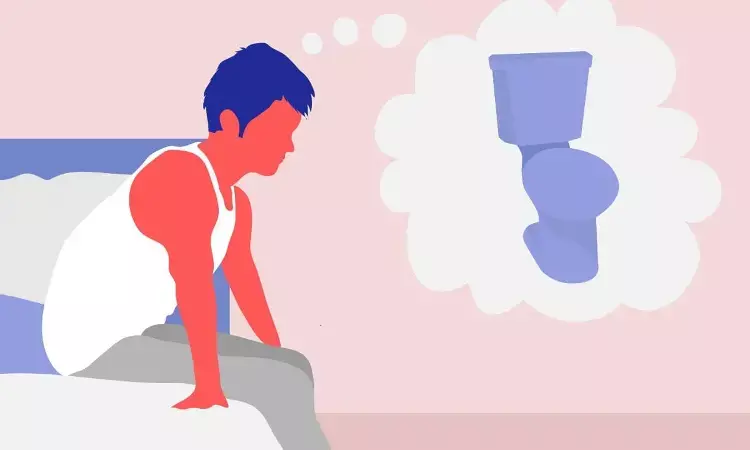- Home
- Medical news & Guidelines
- Anesthesiology
- Cardiology and CTVS
- Critical Care
- Dentistry
- Dermatology
- Diabetes and Endocrinology
- ENT
- Gastroenterology
- Medicine
- Nephrology
- Neurology
- Obstretics-Gynaecology
- Oncology
- Ophthalmology
- Orthopaedics
- Pediatrics-Neonatology
- Psychiatry
- Pulmonology
- Radiology
- Surgery
- Urology
- Laboratory Medicine
- Diet
- Nursing
- Paramedical
- Physiotherapy
- Health news
- Fact Check
- Bone Health Fact Check
- Brain Health Fact Check
- Cancer Related Fact Check
- Child Care Fact Check
- Dental and oral health fact check
- Diabetes and metabolic health fact check
- Diet and Nutrition Fact Check
- Eye and ENT Care Fact Check
- Fitness fact check
- Gut health fact check
- Heart health fact check
- Kidney health fact check
- Medical education fact check
- Men's health fact check
- Respiratory fact check
- Skin and hair care fact check
- Vaccine and Immunization fact check
- Women's health fact check
- AYUSH
- State News
- Andaman and Nicobar Islands
- Andhra Pradesh
- Arunachal Pradesh
- Assam
- Bihar
- Chandigarh
- Chattisgarh
- Dadra and Nagar Haveli
- Daman and Diu
- Delhi
- Goa
- Gujarat
- Haryana
- Himachal Pradesh
- Jammu & Kashmir
- Jharkhand
- Karnataka
- Kerala
- Ladakh
- Lakshadweep
- Madhya Pradesh
- Maharashtra
- Manipur
- Meghalaya
- Mizoram
- Nagaland
- Odisha
- Puducherry
- Punjab
- Rajasthan
- Sikkim
- Tamil Nadu
- Telangana
- Tripura
- Uttar Pradesh
- Uttrakhand
- West Bengal
- Medical Education
- Industry
Hormone therapy: a probable solution for postmenopausal women with nocturia

Recent research reveals that treatment of postmenopausal women with systemic hormonal therapy (HT) led to a significant reduction in nocturia prevalence and a significant improvement of bother in women with ≥ 2 nocturnal voids.
The study is published in the Menopause Journal.
It has been demonstrated that HT improves the causative factors of postmenopausal nocturia, as it has an effect on the most prevalent postmenopausal sleep disorders. However, the literature specifically assessing the effect of HT on nocturia is limited.
Therefore, Pauwaert Kim and colleagues from the Department of Urology, Ghent University Hospital, Belgium conducted this prospective study to observe the impact of different hormonal treatment options on nocturia, its causative factors and bother in postmenopausal women.
The authors recruited a total of 245 postmenopausal women and divided them into four treatment groups based on patient's choice: Estrogen + Progesterone (E+P), Estrogen-only in patients with a prior hysterectomy, tissue-selective estrogen complex (TSEC) and no treatment.
Nocturia and its causative factors were observed using two standardized questionnaires before and after treatment: the International Consultation on Incontinence Questionnaire Nocturia Module and the Targeting the individual's Aetiology of Nocturia to Guide Outcomes (TANGO).
The results of the Targeting the individual's Aetiology of Nocturia to Guide Outcomes were divided in four influencing topics of which the sum score was calculated.
The key findings shown were-
a. A significant reduction in prevalence of nocturia ≥ twice per night was seen after treatment, as the prevalence decreased from 27.7% (59/213) to 16.4% (35/213).
b. Specified per therapy, a significant reduction in nocturnal voiding frequency was observed in patients treated with E+P and TSEC (P = 0.018 and P = 0.018, respectively).
c. This improvement could be explained by a significant reduction in SLEEP sum score in patients treated with E+P and TSEC (P < 0.001, P = 0.013, respectively).
d. Estrogen-only led to a significant change in URINARY TRACT sum score, which is the result of a reduction in urgency prevalence (P = 0.039).
Hence, the authors concluded that "E+P and TSEC treatment led to a significant reduction in nocturia prevalence and bother in women with ≥ 2 nocturnal voids. This effect is mainly the result of improvement in sleep disorders, however an improvement in bladder disorders can be suggested as well. More research is necessary to confirm these findings."
Dr. Nandita Mohan is a practicing pediatric dentist with more than 5 years of clinical work experience. Along with this, she is equally interested in keeping herself up to date about the latest developments in the field of medicine and dentistry which is the driving force for her to be in association with Medical Dialogues. She also has her name attached with many publications; both national and international. She has pursued her BDS from Rajiv Gandhi University of Health Sciences, Bangalore and later went to enter her dream specialty (MDS) in the Department of Pedodontics and Preventive Dentistry from Pt. B.D. Sharma University of Health Sciences. Through all the years of experience, her core interest in learning something new has never stopped. She can be contacted at editorial@medicaldialogues.in. Contact no. 011-43720751
Dr Kamal Kant Kohli-MBBS, DTCD- a chest specialist with more than 30 years of practice and a flair for writing clinical articles, Dr Kamal Kant Kohli joined Medical Dialogues as a Chief Editor of Medical News. Besides writing articles, as an editor, he proofreads and verifies all the medical content published on Medical Dialogues including those coming from journals, studies,medical conferences,guidelines etc. Email: drkohli@medicaldialogues.in. Contact no. 011-43720751


